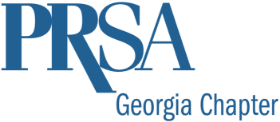Redefining your Writing Rhythm: How to Find the New Inspirations that can Fuel your Next Smash Hit
by Jamie Cwalinski
Whether through your car radio, personal music player or the speaker of your favorite restaurant or retailer, odds are you’ve heard the Goo Goo Dolls’ hit song “Iris” sometime during the last two decades.
The irony is that while the song went on to earn multiple Grammy nominations, it emerged from a period of creative struggle. Singer Johnny Rzeznik notes that deep writer’s block followed the band’s initial mainstream success a few years prior, and it wasn’t until the group was asked to contribute a song to the “City of Angels” movie soundtrack (and he caught an early screening) that something clicked.
In a similar vein, PR writers are tasked with producing what at times feels like a never-ending string of “hits.” Whether for media opportunities, executive thought leadership or promotional materials (among others), we are expected to find new and innovative ways to tell stories for our companies and clients while tailoring language to different audiences and upholding personal and corporate branding. After delivering upon – and celebrating – one breakthrough idea, the pressure begins again to find the next one.
Much like a catchy melody, solid PR writing maintains a rhythmic flow that captures readers’ attention. And while most PR communicators can’t rely on big-budget Hollywood movie previews to spark our storytelling, there are plenty of basic, low-effort avenues to get the creative juices flowing.
The next time you’re in a creative rut and toiling to put pen to paper, try giving this five-track “EP” a “listen.”
Try a “Cover Song”
Who is your favorite author or reporter? What are your go-to sources for news? Often times, the best PR writers find inspiration and direction by studying others’ work. By immersing yourself in a wider range of content, you can not only expand your vocabulary, but potentially discover new styles, techniques and word play – even if what you’re writing about is drastically different. Likewise, pay close attention to what your company’s or client’s top competitors are saying and how they are producing content – even if only to uncover an approach to avoid.
Put Yourself on “Stage”
Even the best PR writers can fall into the trap of trying to write more for their clients or organizations and less for their audiences. As you’re mapping out your next piece, think about what captures your attention when you’re consuming content, and translate that into your approach. If you’re writing about consumer products, think about what details and sources would make you want to learn more or potentially even make a purchase. If you’re writing for a website or LinkedIn, think about the kinds of headlines, language and angles that make you stop scrolling and start reading. By putting yourself in your readers’ shoes, you can better tap into their interests and needs, speak with less of a stuffy and corporate tone, and make a stronger and more meaningful connection.
Try a New Sound
How often have you listened to new music from your favorite singer or band and thought, “Wow, that sounds like nothing I’ve heard before?” Musicians often try new styles or arrangements to challenge their own creativity, understanding that audiences don’t want to hear things that feel rehashed. PR writers similarly should not be afraid to think outside the box and break the monotony. For example, if you’re producing content for a blog or website, maybe a listicle or Q&A-style article would work in place of a traditional feature. While you may not always be able to change the subject, you can change the format, and spark new-found excitement and variety that your audiences will enjoy.
Engage your Band
Successful PR writing does not have to be the work of a “one-man band.” As you approach your next assignment, ponder if a conversation with a leader or teammate might be worthwhile first. Ask your colleagues about where they find inspiration, what their go-to resources are and which pieces went over the best with their target audiences. If your client or company has a dedicated sales team, talk with a product or customer lead to learn about industry trends, customer pain points, and messaging and positioning that you previously may not have considered. Additionally, if you’re tasked with producing multiple pieces on behalf of an executive or SME, get to know that individual on a personal, non-work level. In doing so, you can not only pick up on tone and preferred terminology to more authentically capture his or her voice, but also learn more about hobbies and personal interests that you can weave into your writing for added personal flair.
Embrace the Noise
For songwriters and PR writers alike, creativity and inspiration don’t always happen within a given window. We’ve all stared frustratingly at a screen waiting for the right words to emerge. During these struggles, it’s okay to step away and come back later. It’s possible – and maybe even likely – that your next great moment of writing genius will come in the shower, on the treadmill or watching TV. You may even find a pop culture or everyday life connection that you can incorporate to make your content fun and relatable.
Much like music, great PR writing is a craft that takes time to master, but welcomes unique and different approaches inspired at times by the most unlikely sources. While it can take time to find the desired harmony, the savviest and most open-minded PR pros know how to use the vast resources around them to produce pieces that resonate like an infectious chorus.
After all, writer’s block is made to be broken, and with a fresh outlook on how to start, your clients, audiences and potentially the world surely will know who you are!
